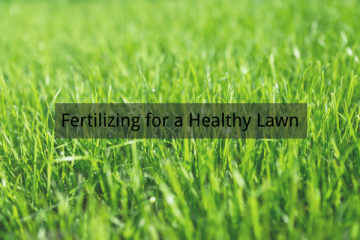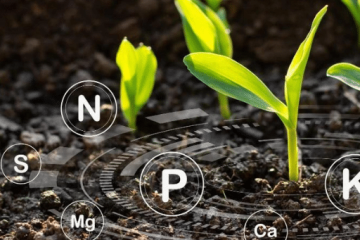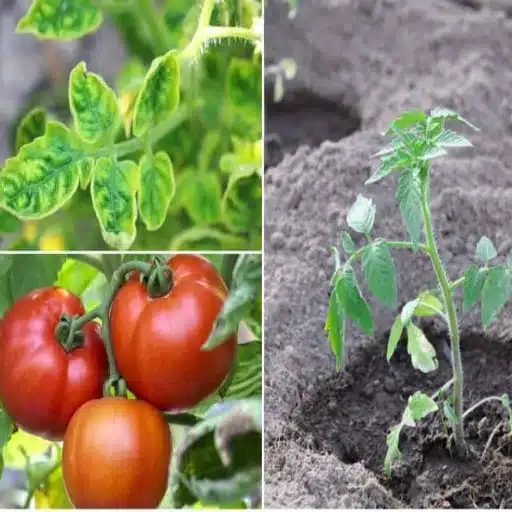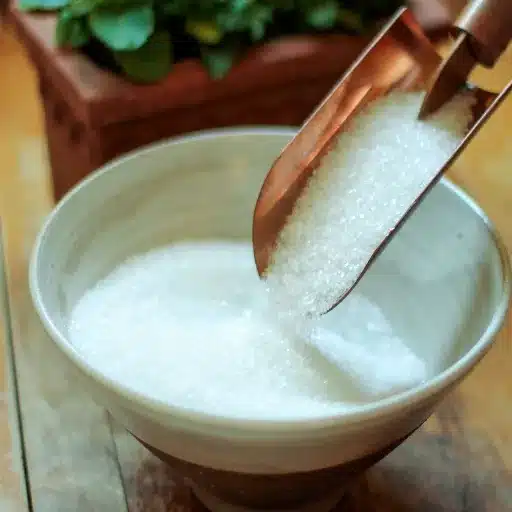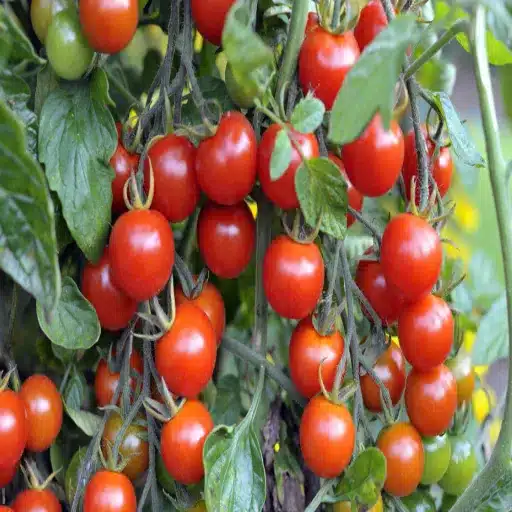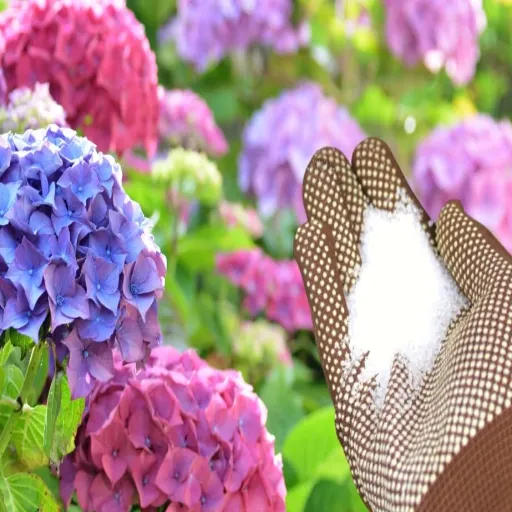Healthy tomato and pepper plants need more than sunlight, water, and soil. Gardeners often seek the possibility of natural methods to enhance growth and yield. That is where Epsom salts come into play-a gardener’s secret, especially for tomatoes and peppers. But how does it work? Is it good for the plants, and if it is, how do you use it? Herein we will discuss the scientifically-backed benefits of Epsom salt, how to apply it, and at what dosage, all to help you in having a more productive and colorful garden. Whether you are an experienced gardener or a novice at this, this guide will prepare you with knowledge to uplift your tomato and pepper plants.
Understanding Epsom Salt
What is Epsom Salt?
Epsom salt, or magnesium sulfate, is a naturally formed mineral compound consisting of magnesium, sulfur, and oxygen. It is famed for its beneficial uses in the wellness, beauty, and gardening areas. Epsom salt, unlike table salt, has no sodium chloride and is never used as a seasoning or condiment.
For gardening, Epsom salts are prized for their magnesium content, which is considered an essential element in photosynthesis as it helps plants produce chlorophyll. Magnesium also aids in nutrient uptake, facilitating plants on accepting nutrients such as nitrogen and phosphorus more effectively. The other major element of Epsom salt, sulfur, counteracts enzyme and protein formation in plants, hence promoting proper health and growth.
In the case of Epsom salt being good for plants like tomatoes and peppers, it is because their magnesium requirement is higher. By fixing possible magnesium deficiency, gardeners will be able to cultivate stronger and greener foliage, improved fruit production, and generally healthier crops. This natural compound can give support to plants through their growth when applied in recommended amounts, being an effective and safe means of doing so.
Chemical Composition and Benefits
Epsom salt, or magnesium sulfate, consists of magnesium, sulfur, and oxygen. This chemical name of MgSO₄ is very important in relation to soil and plant health improvement. Magnesium is an essential nutrient, needed for photosynthesis because it is very much important in making chlorophyll. Sulfur is vital for protein and enzyme synthesis needed for plant growth.
The advantages of Epsom salt in gardening are well appreciated. Magnesium deficiencies cause yellowing of leaves and stunted growth in plants, and Epsom salt remedies these problems efficiently. In addition to enhancing the availability of magnesium to the soil, it also improves the absorption of other nutrients such as phosphorus and nitrogen by the plants, thereby fostering the production of healthy and vibrant foliage. Sulfur from Epsom salts promotes vigorous growth by ensuring that enzymes function properly and proteins are synthesized.
Some crops such as tomatoes, peppers, and roses demand larger quantities of magnesium; therefore, this salt is beneficial to these plants in particularly large amounts. It promotes high blooming, fruit, and flower quality, and plant growth to further greener and stronger development. Epsom salt, when used moderately and applied well-when fertilizing the soil, performing a foliar spray, and so forth-can greatly enhance the general health and productivity of the plant.
How Epsom Salt Helps Tomato and Pepper Plants
This Epsom salt assists in the tomato and pepper plants by being immediately available for magnesium uptake, which is an essential nutrient for photosynthesis. Magnesium is an integral element of chlorophyll that lets the plant produce energy from sunlight. Not having enough magnesium will show a bunch of symptoms on the tomato and pepper plants like yellowing of the leaves and poor growth, which reduces the yields of fruit they conceive.
Sometimes, Epsom salt helps in the formation of blossoms and fruits. A hungry blossom never does well; it needs Mg, and good flowering will prevent the onset of blossom end rot in tomatoes and peppers due to nutrient imbalances. When used as a foliar spray, it will provide a quick solution to any magnesium deficiencies that may exist and improve the vigor of your plants.
To use Epsom salt efficiently, gardeners must stick to recommended application rates. For example, mixing 1 tablespoon Epsom salt with 1 gallon of water can be applied every two weeks to promote development in plants without giving an overdose of unnecessary nutrients into the soil. Rightly applied, Epsom salt will make tomato and pepper plants sturdier, yields better, and achieve optimal health throughout their growth.
Benefits of Using Epsom Salt
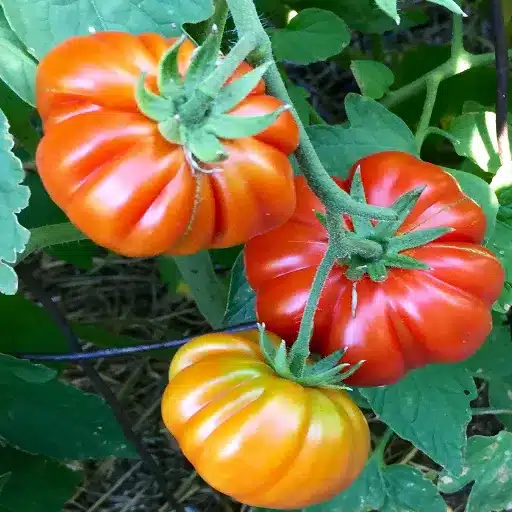
Enhancing Nutrient Absorption
Due to its high magnesium and sulfur content, Epsom salt plays a crucial part in expressing nutrient absorption in plants. These essential nutrients help plants in the better absorption of other important nutrients from the soil. Here lie some benefits when enhanced nutrient absorption is achieved by the right use of Epsom salt:
- •
Enhance Chlorophyll Production: Magnesium is a key component of chlorophyll, which, in turn, is responsible for photosynthesis. Further chlorophyll production makes the plants green and healthier and able to convert sunlight adequately into energy. - •
Increase the Uptake of Nitrogen and Phosphorus: Through the supply of magnesium, Epsom salt allows plants to absorb nitrogen and phosphorus efficiently, which are two essential macronutrients required for plant growth and root development. - •
Enhance Flower and Fruit Production: Magnesium and sulfur help in enhancing flower and fruit production; therefore, stronger flowers and fruits can be assured for higher yields in flowering plants and crops such as tomatoes and peppers. - •
Prevents Nutrient Deficiencies: Epsom salt serves as prevention from nutrient deficiencies common to certain soils; namely those deficient in magnesium or considered depleted following repeated plantings. They help enhance general plant health and withstand resilience. - •
Enhances Soil Quality: The presence of sulfur in Epsom salt contributes to general soil conditioning by imparting to it a better texture and structure that favor water and nutrient retention, thus sustaining nutrient supply for the growing plants.
Incorporating these benefits into gardening will undoubtedly make Epsom salt a great helper to healthy and flowering plants.
Improving Plant Growth and Yield
Plant growth and yield can be improved by employing skills and practices to set the optimum growing conditions for plants. Here are five main strategies, along with their particulars, to promote plant health and productivity:
- Use of Epsom Salt: Epsom salt provides magnesium and sulfur, two nutrients indispensable to plants. Magnesium facilitates photosynthesis, while sulfur acts to combine proteins and enzymes. Some studies also indicate that if Epsom salts are applied commonly, yield might increase, specifically in crops like tomatoes, peppers, and roses.
- Crop Rotation: Crop rotation prevents certain nutrients from being fully exhausted in the soil, as well as depriving pests and diseases of breeding opportunities. For example, the planting of nitrogen-fixing leguminous plants such as beans or peas enriches soils for succeeding crops.
- Composting Organic Matter: Using compost in soil helps with its structure, water retention, and the constant release of nutrients. Studies have shown that plants grown in compost-rich soil have yields 20-30% higher than those raised in untreated soil.
- Optimizing Watering Practices: At the right time is when plants need the most water from them. Too much water causes the fungus root rot, and underwatering will stress plants. Installation of irrigation like drip irrigation irrigation systems can increase efficiency in water use and improve yields by as much as 50%.
- Balanced Fertilization: The right balance of plant nutrients is required,including nitrogen, phosphorus, and potassium. Soil tests done regularly naked fertilization practices. For example, assuring adequate potassium content in the soil can improve fruit yield of strawberries and bananas by 10-15%.
Through the implementation of these methods, gardeners and farmers may create optimum conditions for the plants whereby healthy growth and increased yields can result.
Preventing and Addressing Nutrient Deficiencies
Nutrient deficiencies should be prevented to maintain healthy plant growth and maximize yield. The very first step is to test the soil occasionally to check nutrient levels and discover deficiencies. Nutrient requirements, once understood from the soil itself, can be targeted accordingly by means of fertilizer application by the farmer-gardener so that the plants do not lack any required element for growth and are not over-fertilized for the same matter either.-In some cases, over-fertilization is equally harmful in vigorous plant growth. Fertilization, if done properly and specifically for crops in general, can prevent nutrient deficiencies from ever becoming a problem.
Another method of cropping rotation and ultimately in diversification is needed. The continual growth of the same crop in a single-location-site depletes specific nutrients from that soil so that, after some time, they are in deficiency. When rotation cycles are implemented, nutrients can be replenished so that different plants have different nutrient demands. Further, legumes or cover crops may be included in the rotation, conferring nitrogen benefits to the soil and reducing fertilizer use. This practice enriches the environment for crop growth while improving soil structure and conserving it against erosion.
Presently, deficiencies have to be corrected immediately after detection of the lacking nutrient. For example, consider magnesium deficiency as causing yellowing between leaf veins, then adding dolomitic lime or magnesium sulfate can replenish this nutrient. In the same way, with phosphorus deficiency, treatment might include use of rock phosphate or bone meal. Coming to water and pH management, they should never be overlooked since pH and water stress levels greatly control nutrient uptake. By vigilant observation of the crop status and suitably modifying operations, growers will have fertilizer application method for better crop growth and long-term sustainability of their farming systems.
Application Methods of Epsom Salt
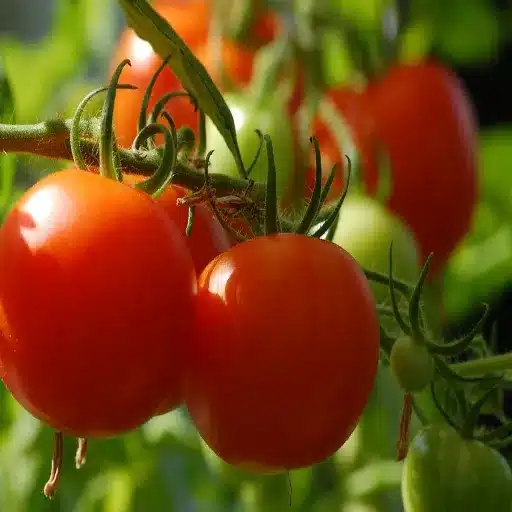
How to Apply Epsom Salt to Tomato Plants
Epsom salts provide magnesium sulfate, an essential nutrient that works toward the plants’ good growth, bright foliage, and further fruit development. Let us consider five ways to apply Epsom salt effectively:
- 1
Direct Surface Application: During planting, mix 1 tablespoon of Epsom therefore salt into the soil at the base of each tomato plant. This ensures that the roots immediately begin to absorb magnesium as the plant starts to grow. - 2
Watering Solution: Dissolve 2 tablespoons of Epsom salt into 1 gallon of water, then use the solution to water the tomato plants every 2-4 weeks. Maintenance use maintains nutrient supply all along the growing season. - 3
Foliar Spray: Use 1 tablespoon of salts with 1 gallon of water for a foliar spray. Use this spray on the leaves of your tomato plants early in the morning or in the evening, so the treatment can be quickly absorbed and relief can be given to the symptoms of magnesium deficiency. - 4
Pre-Planting Enrichment: Before planting tomatoes, hold a cup of Epsom salt in your hand and sprinkle it evenly over the garden soils for every 100 square feet of the area. Mix well into the soil to have increased magnesium content of the soil, serving the basis of plant health. - 5
Side Epsom Salt Dressing During Growth: About halfway through the growing season, sprinkle 1 tablespoonful of Epsom salt about 2 inches away from the stem around the base of each plant. Work it lightly into the soil and water well to increase the magnesium levels during fruiting when it is most needed.
Following faithfully these methods of application will keep tomato plants healthy, thereby producing more fruits of better quality. In any case, Epsom salt is one of the simplest and most effective resources in sustainable gardening.
How to Apply Epsom Salt to Pepper Plants
Sometimes, an Epsom salt treatment can be what the pepper plants need for nutrient deficiency symptoms to vanish, in chlorophyll production to improve, and the total well-being of the plants. There are five different ways to deliver Epsom salts to the pepper plants, explained with details below:
- 1
Seedling Mix: Dissolve 1 tablespoon of Epsom salt in one gallon of water and water the seedlings using this solution. Having enough magnesium at the early growth stages will encourage a strong and healthy start. - 2
Foliar Spray: Take 1 tablespoon of Epsom salt and dissolve it in a gallon of water. Pour this solution into a spray bottle and mist pepper plant leaves, especially those on their underside surface, while absorption here is most effective. This spray is applied every fortnight to quickly remedy magnesium deficiencies. - 3
Pre-Plant: A spoonful of Epsom salts should be incorporated into the soil in each planting hole before planting the pepper seedlings. This pre-treatment provides the magnesium needed for vigorous growth and strong root development of the plants. - 4
Regular Application to Soil: Epsom salts can be sprinkled around the base of each pepper plant in a 1-tablespoon quantity once every month during the growing season. We recommend maintaining a 2-inch gap away from the stem and watering thoroughly after application so that the plant can absorb as many nutrients as possible. - 5
Fruiting Stage Support: During this crucial fruiting stage, dissolve 1 tablespoon of Epsom salts in a gallon of water and give a deep watering to the plants so that the magnesium levels can aid in fruit development, preventing blossom-end rot and yellow-tinged leaves.
These treatments ensure that the gardener manages to maximize the pepper plant’s health and productivity, resulting in good yields and high-quality peppers.
Using Epsom Salt as a Foliar Spray
Epsom salt also functions very well applied as a foliar spray to bring magnesium and sulfur to leaves for quick absorption into the plant. It is highly beneficial when plants start to show nutrient deficiency symptoms, such as yellowing of leaves or stunted growth. The following are five detailed benefits and uses of Epsom salt applied as a foliar spray:
- •
Treating Magnesium Deficiency: A magnesium deficient plant features yellow leaves with green veins. A foliar spray application of Epsom salt at the rate of 1 tablespoon per gallon of water stained up the leaves for immediate relief. - •
Promotes Photosynthesis: Magnesium is one of the important ions in the structure of chlorophyll where photosynthesis occurs. The excitation by an Epsom salt spray keeps the leaves green and productive, as they have to produce energy for growth. - •
Promotes Flower and Fruit Development: A magnesium deficit puts stunted development at flowering and fruiting stages. Once every two weeks, foliar application of Epsom salt will keep the flowers healthy and from getting better fruit quality. - •
Improves Nutrient Absorption: Foliar application does not just supply magnesium and sulfur but, through some physiological functions, also helps the plant absorb nutrition better from the soil, especially nitrogen and phosphorus. - •
Relieves Leaf Curl and other Stress Symptoms: Epsom salt, applied as a foliar spray, can remedy stressed plants that are suffering from high heat or drought by alleviating the stress symptoms, e.g., curling feel or wilted leaves due to better nutrient availability and moisture retention.
Incorporating Epsom salt foliar sprays into one’s horticultural regimen can only benefit the cause of growing healthy, productive plants.
Potential Risks and Misconceptions
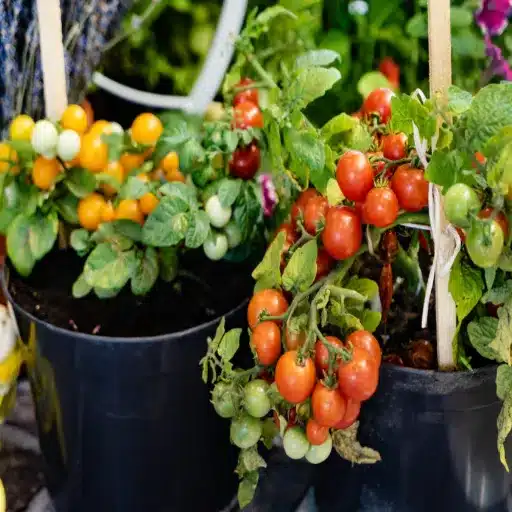
Overapplication and Its Effects
When Epsom salts are utilized with care, they can help the plants. But their misuse can lead to several undesirable consequences. It is important to use this substance moderately to keep away from such instances. The following are five main effects of overusing Epsom salts:
- ⚠️ Magnesium Toxicity in Soil: Epsom salt, if used in excess, can cause a magnesium buildup in the soil that finally alters the balance of nutrients and blocks the uptake of other essential elements such as calcium and potassium.
- ⚠️ Reduced Plant Growth: Stunted growth may also take place upon excess application of such salts-the imbalances in soil nutrients can hamper normal plant development and the absorption of nutrients.
- ⚠️ Contamination of Water Sources: It can contaminate adjacent water bodies upon excessive use of Epsom salts, thus leading to the pollution of the water and degradation of aquatic ecosystems caused by runoff containing magnesium sulfate.
- ⚠️ Salt Build-Up in Soil: High concentrations of Epsom salt increase salinity, making soil unwelcoming for plant growth and causing dehydration in plants.
- ⚠️ Potential to Burn Leaves: Applying Epsom salt at excessive concentrations as a foliar spray will cause burning of leaves, as the salts present in very high concentrations on the surface of leaves damage the tissues and reduce the health of plants.
When gardens follow instructions and use Epsom salt for its intended purpose, they should reap its benefits without any noted disadvantages.
Common Myths About Epsom Salt
There ends up being a whole lot of information in the myth-be-damned category interacting with the punch Epsom salt might deliver to the plant world. One such popular notion is that Epsom salt is a cure-all for plant health. Although magnesium sulfate can solve magnesium-deficiency problems, not all plants need extra magnesium, and in context, its excessive or wrongful use will cause damage to plants and soil systems rather than healing them.
The other big notion running around says that Epsom salts in itself is a pesticide or herbicide of some form. Although various and sundry may have their own wild tales about the matter, nothing scientific is known to back up such a claim. Epsom salt is not effective against pests nor does it cruelly kill weeds, and its use for these purposes may very well do an opposite effect to the garden.
Some also think that Epsom salt is used to speed seed germination or flowering. Magnesium is indeed necessary for plant functions like photosynthesis, but very limited data suggest that Epsom salt application may influence seed germination rate or greatly enhance flower production unless a deficiency is already present.
Gardeners must rely on good scientific information to practice proper gardening rather than myths. Proper soil testing and understanding the specific needs of a plant are a lot more productive than generalized instructions on the use of Epsom salt.
Signs of Epsom Salt Overuse in Plants
With the excess, fertilizers particularly Epsom salt can cause a variety of huge effects on a plant, some of which may not be immediately evident to the gardener. A key indicator of overapplication is the yellowing or browning of leaves-a problem often mistaken for a nutrient deficiency or a disease. There is a disarray in the uptake of other nutrients like calcium and potassium because of excessive magnesium from Epsom salts, which brings the imbalance toward growth and health for their plants. The soils can then become compacted-cumulated with magnesium-negatively interfering with water and air flow to the roots.
Increased Epsom salts, causing stunted growth or developmental trouble in flowers and fruits, are remotivate symptoms of overuse. Plants require the fine balance of nutrients for their own sustenance, and an oversaturation of magnesium sulfate in the soil might divert attention away from vital macronutrients like nitrogen, phosphorus, and potassium. It disrupts photosynthesis and thus lessens a plant’s vigor. In the long run, this disturbance can reduce the yield of flowering and fruit-bearing plants as a whole.
Another environmental concern pertains to the immense use of Epsom salt. Magnesium sulfate, if applied excessively, can cause leachate in nearby water bodies, thus adding to water pollution and potentially devastating aquatic communities. This runoff issue is one reason that implicates responsible gardening practices. To not overdo the use of Epsom salt, gardeners should rely on soil tests and the exact needs of their plants rather than on blanket recommendations. Using science-based knowledge with mindfulness, they can ensure their gardening endeavors foster sustainable development.
Alternative Soil Amendments for Tomato and Pepper Plants
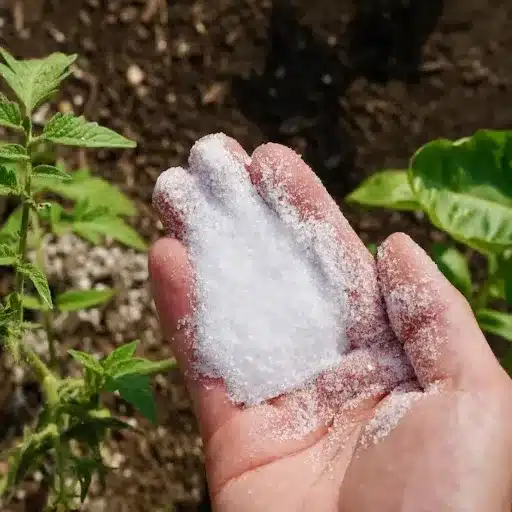
Comparing Epsom Salt with Other Amendments
Epsom salt is compared with amendments like wood ashes, greensand, rock phosphate, soybean meal, gypsum, sulfur, and alfalfa meal.
| Amendment | Nutrient | Effect | Best Use | Caution |
|---|---|---|---|---|
| Epsom Salt | Mg, S | Boosts Mg, S | Mg-deficient | Overuse harmful |
| Wood Ashes | K, others | Reduces acidity | Potassium need | Avoid acidic soil |
| Greensand | K, micro | Slow K release | Long-term K | Limited release |
| Rock Phosphate | P, micro | Slow P release | Phosphorus need | Slow effect |
| Soybean Meal | N | Steady N supply | Acidic soils | Root burn risk |
| Gypsum | Ca, S | Improves drainage | Clay soils | No pH change |
| Sulfur | Acidifies | Dissolves Ca | Alkaline soils | Over-acidify risk |
| Alfalfa Meal | N, micro | Boosts growth | General use | Overgrowth risk |
Organic Alternatives to Epsom Salt
Several organic options from which one may go for natural substitutes for Epsom salts in supporting plant growth. While these substitutes provide essential nutrients such as magnesium and sulfur, they have other advantages for the soil and plants as well:
- Dolomite lime: Dolomite lime offers magnesium and calcium, beneficial for plants needing magnesium supplementation. It also balances acid soil pH, thereby ensuring adequately healthy plant growth.
- Kelp meal: Being a powerful source of several trace minerals, kelp meal provides a fraction of the magnesium and sulfur, along with important nutrients such as potassium, that enhance soil structure and increase plant resistance to environmental stress.
- Composted manure: It provides another organic option: well-finished manure from livestock such as cattle or horses. Although manure does not furnish large amounts of magnesium directly, it can enhance the retention capacity of nutrients in the soil and its overall fertility, thus indirectly aiding the absorption of magnesium into the plant.
- Worm Castings: Vermicompost contains abundant nutrients, including magnesium, and is important to stimulate microbial activity in the soil, thereby increasing nutrient availability and plant health.
- Crushed Eggshells: Eggshells output calcium and minimal magnesium over time, decaying slowly, thus a greener option for gardening buffs.
Such organic options foster the long-term health of the soil and sustainability, giving an environmental competitor to the usual track of synthetic supplements like Epsom salts. Applied continually, along with good soil practices, these result in rich healthy plants.
When to Choose Alternatives Over Epsom Salt
When deciding whether to use something other than Epsom salt, I generally take stock of the particular requirements of my plants and the condition of the soil in my garden overall. Epsom salt would help plants that show symptoms of magnesium or sulfur deficiency, but not all plants require these nutrients in larger quantities. If the soil may well be balanced or even rich in magnesium and sulfur, then unneeded application of Epsom salt may accumulate in the soil and prove harmful to plants in due course.
Otherwise, I would opt for other alternatives if I wished to increase soil health in more general terms rather than addressing a particular deficiency. Organic matter like compost and manure slowly release nutrients into the soil and act as root stimulators for microorganisms from the soil. Crushed eggshells serve as a fabulous calcium source with slow release that can be used along with other nutrients. By integrating these alternatives, my gardening becomes sustainable while promoting long-term soil fertility.
At times, a normal Epsom salt solution may not be suited for more magnesium-sensitive plants, and thus, I choose its alternatives when growing a variety of crops. If one source is used endlessly, different plants may end up with some imbalances. By identifying my soil needs through testing and amending it accordingly, I ultimately create a more balanced and healthy garden ecosystem.
References
- Washington State University: Epsom Salts (PDF)
This document explains the role of Epsom salts in relieving magnesium deficiency in tomato plants, though it notes no significant effect on yield. - University of Minnesota Extension: Coffee Grounds, Eggshells, and Epsom Salts in the Home Garden
This source advises against using Epsom salts unless there is a confirmed magnesium deficiency, as it could harm soil and plants. - Cornell University: Midsummer Feeding
This guide suggests adding a tablespoon of Epsom salts to a gallon of water for foliar application to boost magnesium levels. - Michigan State University: Fertilizer Recommendations for Vegetable Crops (PDF)
This document recommends using magnesium sulfate (Epsom salts) at a rate of 10 pounds per acre every 10 days to two weeks to address magnesium deficiencies. - University of Maryland Extension: Fertilizing Vegetables
This source discusses the use of Epsom salts for vegetables like tomatoes and peppers, clarifying that it does not prevent blossom-end rot.
Frequently Asked Questions (FAQ)
Q: How much Epsom salt should I use for tomato and pepper plants?
A: For the tomato and pepper plants, 1-2 tablespoons of Epsom salt are generally recommended per foot of plant height, according to some sources. This cause of dosage ensures that the plants receive the needed magnesium to grow.
Q: Should Epsom salt be put directly in the soil?
A: Yes, you can put Epsom salt directly in the soil. One tablespoon of Epsom salt can be mixed with soil around the base of your tomato and pepper plants; this method helps to increase nutrient absorption.
Q: How should Epsom salt be applied to plants?
A: Epsom salt can be applied either directly into the soil or dissolved in water as a foliar spray, and then sprayed on the leaves.
Q: How often should Epsom salt be applied to garden plants?
A: Epsom salt application is every 4 to 6 weeks during the growing season to sustain an adequate level of magnesium but not to enter into an excessive application.
Q: Does Epsom salt improve the yield of tomatoes and peppers?
A: Yes, Epsom salt aids in improving the yield of tomato and pepper plants. Magnesium in Epsom salt promotes photosynthesis, thus fostering healthier plants and more fruit production.
Q: Is the use of Epsom salt good for potted plants?
A: Of course. It can, by supplying magnesium. About one teaspoon of Epsom salt per gallon of water should work well for container plants.
Q: What are the indicators that my plants require magnesium?
A: Magnesium deficiency creates symptoms in tomato and pepper plants such as yellowing of leaves between veins and poor fruit development. Epsom salts can help fix such problems.
Q: Can I use Epsom salts alongside other fertilizers?
A: Epsom salt can be combined with other fertilizers, although it is not wise to apply it too much as it brings damage to the growing plants. Therefore, follow the directions applied to each fertilizer.
Q: How much Epsom salt can be dissolved in a gallon of water?
A: The most common recommendation is to use 1 tablespoon of Epsom salt per gallon of water when used as a foliar spray. This dilution makes it beneficial for magnesium delivery to the leaves.
Q: Are there any side effects from over-application of Epsom salt?
A: Though Epsom salt is stable, too much of it can imbalance nutrients, eventually harming plants. It is, therefore, necessary to follow the approved dosage to get the best results.

